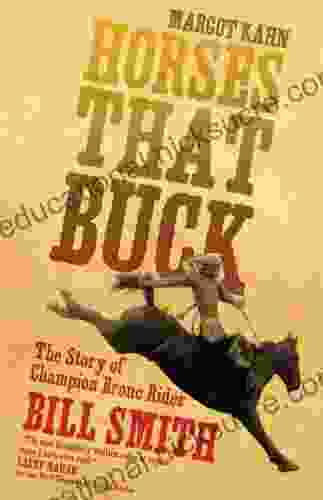Clever Ways to Roughly Calculate Anything

In the fast-paced world we live in, it's often essential to be able to make quick and rough calculations to get a general idea of the solution without having to use a calculator or spend a lot of time on precise measurements. Whether you're estimating the cost of a project, trying to figure out how much food to make for a party, or simply need to know the approximate answer to a math problem, there are some clever ways to roughly calculate anything.
This article will explore some of these clever methods, providing step-by-step instructions and examples to help you master the art of rough calculations.
Fermi estimation is a technique named after the physicist Enrico Fermi, who was known for his ability to make accurate estimates based on very limited data. The key to Fermi estimation is to break down the problem into smaller parts and make reasonable assumptions along the way.
4.4 out of 5
| Language | : | English |
| File size | : | 2481 KB |
| Text-to-Speech | : | Enabled |
| Screen Reader | : | Supported |
| Enhanced typesetting | : | Enabled |
| Word Wise | : | Enabled |
| Print length | : | 196 pages |
Steps for Fermi Estimation:
- Define the problem: Clearly state the question you're trying to answer.
- Break it down: Divide the problem into smaller, more manageable chunks.
- Estimate each chunk: Make educated guesses about the values of each chunk, keeping in mind the order of magnitude (e.g., hundreds, thousands, millions).
- Combine the estimates: Multiply or add the estimates from each chunk to get an approximate answer.
Example: Estimate the number of piano tuners in New York City.
- Break it down: Assume there are 2 million people in New York City. Each person has approximately 10 teeth.
- Estimate each chunk: Assume about 1% of the population needs their piano tuned annually. That's 20,000 people. Assume each piano tuner can handle about 100 pianos per year.
- Combine the estimates: 20,000 people needing tuning / 100 pianos per tuner = 200 piano tuners.
2. Rule of Three: Proportionality at a Glance
The rule of three, also known as the method of proportions, is a simple way to estimate a value when you know two other related values.
Steps for the Rule of Three:
- Set up the equation: Write down the two known values and the unknown value.
- Cross-multiply: Multiply the first known value by the unknown value and the second known value by the first unknown value.
- Solve for the unknown: Divide the result of the cross-multiplication of the first known value and the unknown value by the second known value.
Example: If 5 apples cost $2, how much will 10 apples cost?
- Set up the equation: 5 apples = $2; 10 apples = ?
- Cross-multiply: 5 x ? = 2 x 10
- Solve for the unknown: ? = 20 / 5 = $4
Order of magnitude estimation is a technique for estimating the approximate size or value of something without getting bogged down in details. It's about understanding the scale of the answer rather than the exact value.
Steps for Order of Magnitude Estimation:
- Identify the significant factors: Determine the key factors that influence the value you're trying to estimate.
- Guesstimate the factors: Make educated guesses about the values of these factors, considering their order of magnitude (e.g., tens, hundreds, thousands).
- Multiply or combine the guesses: Multiply or combine the guesses to get an approximate order of magnitude.
Example: Estimate the number of stars in the Milky Way galaxy.
- Significant factors: Diameter of galaxy (100,000 light-years),density of stars (1 star / cubic light-year)
- Guesstimate the factors: Assume the galaxy is roughly spherical and has an average radius of 50,000 light-years.
- Multiply the guesses: 4/3 x π x (50,000 light-years)³ x 1 star / cubic light-year ≈ 100 billion stars
Unit conversion is essential for comparing quantities expressed in different units. By understanding the relationships between units, you can quickly convert values to make them comparable.
Steps for Unit Conversion:
- Identify the units: Determine the units of the given value and the desired units.
- Find the conversion factor: Use a conversion chart or formula to find the conversion factor between the units.
- Multiply by the conversion factor: Multiply the given value by the conversion factor to convert it to the desired units.
Example: Convert 50 kilometers to miles.
- Units: 50 kilometers (km); miles (?)
- Conversion factor: 1 mile ≈ 1.6 kilometers
- Multiply by the conversion factor: 50 km x (1 mile / 1.6 km) ≈ 31 miles
Understanding percentages is crucial for making quick estimates and comparisons. Percentages represent a fraction of a whole expressed as a number between 0 and 100.
Steps for Percentage Calculations:
- Express as a fraction: Convert the percentage to a fraction by dividing it by 100.
- Multiply or divide: Multiply or divide the whole value by the fraction to find the percentage or the whole value, respectively.
Example: Find 20% of 500.
- Express as a fraction: 20% = 20/100 = 1/5
- Multiply by the fraction: 1/5 x 500 = 100
Ratios and proportions are used to compare the relative sizes of two or more quantities. By setting up proportions, you can solve for unknown values or make predictions.
Steps for Ratios and Proportions:
- Set up the proportion: Write down the known values and the unknown value in a proportion.
- Cross-multiply: Multiply the numerator of one fraction by the denominator of the other fraction, and vice versa.
- Solve for the unknown: Solve the equation to find the unknown value.
Example: If 2 apples weigh 3 ounces, how much do 5 apples weigh?
- Set up the proportion: 2 apples / 3 ounces = 5 apples / ? ounces
- Cross-multiply: 2 x ? = 3 x 5
- Solve for the unknown: ? = 15 / 2 = 7.5 ounces
Mastering these clever ways to roughly calculate anything will empower you to make quick and informed estimates, solve problems on the fly, and gain a deeper understanding of the world around you. By embracing approximation and using these techniques, you can overcome the limitations of calculators and become a master of mental math.
Remember, the goal of rough calculations is not precision but rather to get a general idea of the answer. With practice, you'll develop an intuitive sense of numbers and become more confident in making quick estimates. So, next time you need to figure out something in a hurry, don't reach for a calculator; instead, use your brainpower and these clever techniques to get the job done.
4.4 out of 5
| Language | : | English |
| File size | : | 2481 KB |
| Text-to-Speech | : | Enabled |
| Screen Reader | : | Supported |
| Enhanced typesetting | : | Enabled |
| Word Wise | : | Enabled |
| Print length | : | 196 pages |
Do you want to contribute by writing guest posts on this blog?
Please contact us and send us a resume of previous articles that you have written.
 Fiction
Fiction Non Fiction
Non Fiction Romance
Romance Mystery
Mystery Thriller
Thriller SciFi
SciFi Fantasy
Fantasy Horror
Horror Biography
Biography Selfhelp
Selfhelp Business
Business History
History Classics
Classics Poetry
Poetry Childrens
Childrens Young Adult
Young Adult Educational
Educational Cooking
Cooking Travel
Travel Lifestyle
Lifestyle Spirituality
Spirituality Health
Health Fitness
Fitness Technology
Technology Science
Science Arts
Arts Crafts
Crafts DIY
DIY Gardening
Gardening Petcare
Petcare Larry Jacobson
Larry Jacobson Andrew Jamieson
Andrew Jamieson Rita Jablonski
Rita Jablonski Janis Abrahms Spring
Janis Abrahms Spring Cassandra Erkens
Cassandra Erkens Becky Albertalli
Becky Albertalli Jamie Thornton
Jamie Thornton Dave Chambers
Dave Chambers Jessie Cal
Jessie Cal Eli Maor
Eli Maor Rosita Boland
Rosita Boland Edmund Nequatewa
Edmund Nequatewa Morten Lund
Morten Lund Laurie David
Laurie David Ernest Becker
Ernest Becker Eddy Starr Ancinas
Eddy Starr Ancinas Dan Anderson
Dan Anderson Christine Pearson Casanave
Christine Pearson Casanave Dr John Hockey
Dr John Hockey William Mark Huey
William Mark Huey Laird Hamilton
Laird Hamilton Thomas Clarkson
Thomas Clarkson Lauren Conrad
Lauren Conrad Ed Rosenthal
Ed Rosenthal Donn F Draeger
Donn F Draeger K A Linde
K A Linde Mona Liza Santos
Mona Liza Santos Maggie Stiefvater
Maggie Stiefvater Sarah Castille
Sarah Castille Jessica Speer
Jessica Speer Lisa Cron
Lisa Cron Touko Amekawa
Touko Amekawa Chris Mcmullen
Chris Mcmullen Akil Palanisamy
Akil Palanisamy Rachel Pepper
Rachel Pepper Jerry M Gutlon
Jerry M Gutlon Zita Grant
Zita Grant Lauren James
Lauren James Rick Scoppe
Rick Scoppe Michele Amitrani
Michele Amitrani Teresa M Twomey
Teresa M Twomey Anthony Bishop Lmft
Anthony Bishop Lmft Claiborne Young
Claiborne Young Susana Wald
Susana Wald Sabrina Chevannes
Sabrina Chevannes Robert Holdstock
Robert Holdstock Jaimal Yogis
Jaimal Yogis Jerry Z Muller
Jerry Z Muller Sharae Moore
Sharae Moore Hp Newquist
Hp Newquist Rolf Dobelli
Rolf Dobelli John Lofty Wiseman
John Lofty Wiseman Rachel Lynn Solomon
Rachel Lynn Solomon Helene St James
Helene St James Jason R Rich
Jason R Rich Joy Vines
Joy Vines Rupert Sheldrake
Rupert Sheldrake Mikael Krief
Mikael Krief Jennie Lynn Gillham
Jennie Lynn Gillham Gene Stone
Gene Stone Sam Maggs
Sam Maggs Andrew M Greeley
Andrew M Greeley Kevin Shea
Kevin Shea Carl Hart
Carl Hart Bob Brier
Bob Brier John Eberhart
John Eberhart Kuldeep Singh
Kuldeep Singh Kirk W Johnson
Kirk W Johnson Caroline Finnerty
Caroline Finnerty Robert M Schoch
Robert M Schoch James R Hansen
James R Hansen Sendhil Mullainathan
Sendhil Mullainathan Margot Kahn
Margot Kahn Glenn Berkenkamp
Glenn Berkenkamp Beverly Asante Puschmann
Beverly Asante Puschmann Sally Cook
Sally Cook David Stipp
David Stipp Ruta Sepetys
Ruta Sepetys Damon Wiseley
Damon Wiseley Jill Squyres Groubert Phd
Jill Squyres Groubert Phd Lauren Kate
Lauren Kate Slavka Bodic
Slavka Bodic Chris Dowhan
Chris Dowhan Mark Vanhoenacker
Mark Vanhoenacker Judith A Cohen
Judith A Cohen George W Hart
George W Hart Justin Fox Burks
Justin Fox Burks Marian Stamp Dawkins
Marian Stamp Dawkins Emilie Bailey
Emilie Bailey Christopher Vaughan
Christopher Vaughan Cathy Kelly
Cathy Kelly Peggy Orenstein
Peggy Orenstein Ruth Haley Barton
Ruth Haley Barton W Michael Kelley
W Michael Kelley Ronald T Kneusel
Ronald T Kneusel William E Hearn
William E Hearn Christine Moore
Christine Moore Liz Prince
Liz Prince William J Broad
William J Broad Ehsan Masood
Ehsan Masood Rory Stewart
Rory Stewart Joey Rive
Joey Rive Heidi Dais
Heidi Dais Erika V Shearin Karres
Erika V Shearin Karres Kay Pranis
Kay Pranis David Jefferson
David Jefferson Simson L Garfinkel
Simson L Garfinkel Rolf Potts
Rolf Potts Henry Fielding
Henry Fielding J K Rowling
J K Rowling Dan Werb
Dan Werb Rhianna Pratchett
Rhianna Pratchett Madeleine Roux
Madeleine Roux Timothy Gordon
Timothy Gordon Sheryl Feinstein
Sheryl Feinstein Bridgit Danner Lac
Bridgit Danner Lac Shannon Brown
Shannon Brown Christine Carter
Christine Carter Seabury Quinn
Seabury Quinn Maggie Ryan
Maggie Ryan Daniel Mark Brown
Daniel Mark Brown Ashley Schmitt
Ashley Schmitt Seth J Gillihan Phd
Seth J Gillihan Phd Walter Martin
Walter Martin Linda Goldberg
Linda Goldberg Jim Burnett
Jim Burnett Gladstone Califf
Gladstone Califf Stanley L Jaki
Stanley L Jaki Stephen Rea
Stephen Rea Michael Polanyi
Michael Polanyi Piero Ferrucci
Piero Ferrucci Andrew Peterson
Andrew Peterson Dawne Archer
Dawne Archer Vanessa A P
Vanessa A P Annette K Larsen
Annette K Larsen Bryan Mellonie
Bryan Mellonie Michael J Mauboussin
Michael J Mauboussin Gordon W Green
Gordon W Green Shannon Jensen
Shannon Jensen Lucy Atkins
Lucy Atkins N S Wikarski
N S Wikarski Thomas F Hornbein
Thomas F Hornbein Eric H Cline
Eric H Cline Lynn Painter
Lynn Painter Michaela Deprince
Michaela Deprince Jonathan Scott
Jonathan Scott Winifred Gallagher
Winifred Gallagher Andrew Hartman
Andrew Hartman Michael J Thompson
Michael J Thompson Richard Twiss
Richard Twiss Sarah Digregorio
Sarah Digregorio Carl Allchin
Carl Allchin Andrew Lawler
Andrew Lawler Sarah Pinborough
Sarah Pinborough Sara T Gibbs
Sara T Gibbs Marie Sherlock
Marie Sherlock Nadia Shammas
Nadia Shammas Gary Todd
Gary Todd Garth Nix
Garth Nix Rhonda V Magee
Rhonda V Magee L Kathleen Mahan
L Kathleen Mahan Andrew Hempstead
Andrew Hempstead Martin Woodward
Martin Woodward Monty Roberts
Monty Roberts Briana Wiles
Briana Wiles Steve Lage
Steve Lage Sam Fels
Sam Fels Emily Kerr
Emily Kerr Andrew Robinson
Andrew Robinson John Helyar
John Helyar Kathrine Switzer
Kathrine Switzer Ira J Chasnoff
Ira J Chasnoff Carl Petersen
Carl Petersen Damon B Akins
Damon B Akins M J Abadie
M J Abadie Andrew Reeves
Andrew Reeves William Ma
William Ma Erwin Schrodinger
Erwin Schrodinger Shannon Van Den Berg
Shannon Van Den Berg Andrew J Wakefield
Andrew J Wakefield Dennis J Stanford
Dennis J Stanford Jon Gertner
Jon Gertner Andy Crouch
Andy Crouch Nicholas Harvey
Nicholas Harvey Jim Flynn
Jim Flynn Molly E Lee
Molly E Lee Melody Groves
Melody Groves S G Taylor
S G Taylor Catherine Gildiner
Catherine Gildiner Rosicrucian Order Amorc
Rosicrucian Order Amorc Gila Leiter
Gila Leiter Rudy Rucker
Rudy Rucker Clare Keyes
Clare Keyes Kent Nerburn
Kent Nerburn Christopher Hodapp
Christopher Hodapp Andrew H Knoll
Andrew H Knoll Des Hewitt
Des Hewitt Alexander Bennett
Alexander Bennett Dan Allan
Dan Allan John Mcphee
John Mcphee Dustin Howe
Dustin Howe Bronwen Skye
Bronwen Skye Claire Ahn
Claire Ahn Tom Holland
Tom Holland Diane Tober
Diane Tober Cary Hanson
Cary Hanson Tom Bertrand
Tom Bertrand Ron Hackett
Ron Hackett Michael Epperson
Michael Epperson Mary H K Choi
Mary H K Choi Rainer Martens
Rainer Martens Emily Wibberley
Emily Wibberley Antonio Pigafetta
Antonio Pigafetta Carla Hannaford
Carla Hannaford Jay Arthur
Jay Arthur Jonathan C Slaght
Jonathan C Slaght J D Lenzen
J D Lenzen Helen O Neil
Helen O Neil Jerusha Clark
Jerusha Clark Connie Goldsmith
Connie Goldsmith Sol Adoni
Sol Adoni M L Ray
M L Ray David Sowell
David Sowell Bill Pennington
Bill Pennington Jenny Randles
Jenny Randles Kari Kampakis
Kari Kampakis Tim Clarkson
Tim Clarkson Aaron Edkins
Aaron Edkins W Somerset Maugham
W Somerset Maugham Sadhguru
Sadhguru Sarah Edmondson
Sarah Edmondson Reid Sheftall M D
Reid Sheftall M D Andrew Lang
Andrew Lang Hope Jahren
Hope Jahren Andrew Hudson
Andrew Hudson Joseph Bronson
Joseph Bronson Brian L Silver
Brian L Silver Xan Barksdale
Xan Barksdale John Sefton
John Sefton Christian Heath
Christian Heath Helene Henderson
Helene Henderson Uma Dinsmore Tuli
Uma Dinsmore Tuli Stephon Alexander
Stephon Alexander Bruno David
Bruno David Frances A Yates
Frances A Yates Luca Brambilla
Luca Brambilla Lawrence Dawson
Lawrence Dawson Dawn Isaac
Dawn Isaac George Washington Cable
George Washington Cable Fiona Higgins
Fiona Higgins Tim Huffman
Tim Huffman Claire Phillips
Claire Phillips Tiffany Harelik
Tiffany Harelik Delphi Classics
Delphi Classics Stephen Howe
Stephen Howe Ricky Roberts Iii
Ricky Roberts Iii Lisa Roberts
Lisa Roberts Mallory Striesfeld Ms Lpc
Mallory Striesfeld Ms Lpc Carolyn Coker Ross
Carolyn Coker Ross Omar D Lewis Sr
Omar D Lewis Sr Guy Windsor
Guy Windsor Leslie Klenke
Leslie Klenke Robert Parris Moses
Robert Parris Moses Mark Cannizzaro
Mark Cannizzaro Tom Doak
Tom Doak Chelsea Johnson
Chelsea Johnson Gordon Churchill
Gordon Churchill Nicholas D Souza
Nicholas D Souza Bruce H Lipton
Bruce H Lipton Zhongxian Wu
Zhongxian Wu Miles Smeeton
Miles Smeeton Robert N Wiedenmann
Robert N Wiedenmann Nick Jaffe
Nick Jaffe Justine Bold
Justine Bold Xavier P Hunter
Xavier P Hunter Nelson L Schuman
Nelson L Schuman Jack David Eller
Jack David Eller Jordan Ellenberg
Jordan Ellenberg Monica Clyde
Monica Clyde Jeffro Johnson
Jeffro Johnson C Todd Lombardo
C Todd Lombardo Richard Bullivant
Richard Bullivant Kathleen Huggins
Kathleen Huggins Ross Bernstein
Ross Bernstein Ruth E Van Reken
Ruth E Van Reken Loris Chen
Loris Chen Sean Bloomfield
Sean Bloomfield Gordon Webster
Gordon Webster Jennie Erin Smith
Jennie Erin Smith Leigh Bernacchi
Leigh Bernacchi Paul Seabright
Paul Seabright T H Lain
T H Lain Antipodean Writer
Antipodean Writer Rami Ungar
Rami Ungar Anne Marie Scully
Anne Marie Scully Jonathan Bennett
Jonathan Bennett Sally Bjornsen
Sally Bjornsen Guns Ammo
Guns Ammo Shari Mezrah
Shari Mezrah Stephen Cole
Stephen Cole K L Walther
K L Walther Suzanne Van Atten
Suzanne Van Atten Andrew X Pham
Andrew X Pham Kris Holloway
Kris Holloway Linda Whitenton
Linda Whitenton Stan Tekiela
Stan Tekiela Laird Scranton
Laird Scranton Carla Killough Mcclafferty
Carla Killough Mcclafferty Nina Varela
Nina Varela Gordon Wright
Gordon Wright Texes Exam Secrets Test Prep Team
Texes Exam Secrets Test Prep Team Rosalind Miles
Rosalind Miles Tom Rosenbauer
Tom Rosenbauer Portia Macintosh
Portia Macintosh Melisenda Edwards
Melisenda Edwards Brock Lesnar
Brock Lesnar Jared Benson
Jared Benson Richelle Mead
Richelle Mead John R Anderson
John R Anderson Adam Minter
Adam Minter Lisa Silverman
Lisa Silverman Jennifer Lw Fink Rn Bsn
Jennifer Lw Fink Rn Bsn Elizabeth Walter
Elizabeth Walter Ilene And Gary Modica
Ilene And Gary Modica Andy Ankowski
Andy Ankowski Nancy Wainer Cohen
Nancy Wainer Cohen Tanya Crossman
Tanya Crossman Joya Goffney
Joya Goffney Elizabeth Acevedo
Elizabeth Acevedo Nick Estes
Nick Estes Andrew Thompson
Andrew Thompson Luna Fox
Luna Fox Sue Fleming
Sue Fleming Kevin Thomas
Kevin Thomas Andrew Zerling
Andrew Zerling Andrew Phillip Smith
Andrew Phillip Smith Melanie Burnell
Melanie Burnell David A French
David A French David Hawkins
David Hawkins Peter Compton
Peter Compton Howling Moon Books
Howling Moon Books James P Sethna
James P Sethna Jason William
Jason William Mark Hyman
Mark Hyman Samuel Hideo Yamashita
Samuel Hideo Yamashita Andy Burnham
Andy Burnham Elianor M A
Elianor M A Andrew Hodges
Andrew Hodges Kirk Goldsberry
Kirk Goldsberry Samara Caughey
Samara Caughey Judy Ford
Judy Ford Benedict Goleman
Benedict Goleman Mark Vella
Mark Vella Michelle Madow
Michelle Madow Lisa Bevere
Lisa Bevere Patrick Barrett
Patrick Barrett John Daido Loori
John Daido Loori Vivien Newman
Vivien Newman Neil Harman
Neil Harman Charles Cooper
Charles Cooper Mike Wells
Mike Wells Howard Thurman
Howard Thurman Carson Mccullers
Carson Mccullers H A Lorentz
H A Lorentz Stephen James
Stephen James Quick Guide
Quick Guide Arthur Kleinman
Arthur Kleinman Brian Grossenbacher
Brian Grossenbacher Andrew Stellman
Andrew Stellman Jim Hardy
Jim Hardy Brianne Donaldson
Brianne Donaldson Mark Mcclusky
Mark Mcclusky Dan Orr
Dan Orr Slow Sprint
Slow Sprint Gabriel Weinberg
Gabriel Weinberg Gina M Biegel
Gina M Biegel Rachel E Spector
Rachel E Spector Sebastian Deterding
Sebastian Deterding Stephan Lee
Stephan Lee Yasuharu Okuda
Yasuharu Okuda Roger Highfield
Roger Highfield Ben Foss
Ben Foss Tom Chesshyre
Tom Chesshyre J Richard Hackman
J Richard Hackman Nigel Calder
Nigel Calder Diane R Gehart
Diane R Gehart Mawi Asgedom
Mawi Asgedom James Berry
James Berry Shonda Rhimes
Shonda Rhimes Stephen Prata
Stephen Prata Angela Berkfield
Angela Berkfield Andrew Shaw
Andrew Shaw V S Ramachandran
V S Ramachandran Daniel D Fox
Daniel D Fox Michio Kaku
Michio Kaku Charlie Jones
Charlie Jones Sean B Carroll
Sean B Carroll Daniel Tammet
Daniel Tammet Peter Kaminsky
Peter Kaminsky Stephanie V W Lucianovic
Stephanie V W Lucianovic Pseudo Nym
Pseudo Nym Chris Rodell
Chris Rodell Nicholas J Higham
Nicholas J Higham Mirabai Starr
Mirabai Starr Master Wong
Master Wong Andrew Heywood
Andrew Heywood Palle Yourgrau
Palle Yourgrau Mark Lester
Mark Lester Stacey Lee
Stacey Lee Marcus Tomlinson
Marcus Tomlinson Kevin Anderson
Kevin Anderson John Macgregor
John Macgregor Edward C Klatt
Edward C Klatt E K Johnston
E K Johnston Ruth Bell Graham
Ruth Bell Graham Hugh P Mckenna
Hugh P Mckenna Dr Sarah Mitchell
Dr Sarah Mitchell Eva Longoria
Eva Longoria Mark Needham
Mark Needham Michael F Roizen
Michael F Roizen Sharon A Hansen
Sharon A Hansen Aristeidis Bampakos
Aristeidis Bampakos Pawel Guziejko
Pawel Guziejko Atul K Mehra
Atul K Mehra The Car Crash Detective
The Car Crash Detective Philip Reeve
Philip Reeve Jennifer M Rosner
Jennifer M Rosner David Carrasco
David Carrasco Madeleine L Engle
Madeleine L Engle Dora Kurimay
Dora Kurimay P Anastasia
P Anastasia Carolyn S Schroeder
Carolyn S Schroeder Tami Fox
Tami Fox George H Odell
George H Odell Tony Ray
Tony Ray Elijah N Daniel
Elijah N Daniel Betty Smith
Betty Smith Peter D Jeans
Peter D Jeans Natalie Babbitt
Natalie Babbitt Fred Rogers
Fred Rogers John Atherton
John Atherton Sian Beilock
Sian Beilock Paul Davies
Paul Davies Andrew Moore
Andrew Moore Davida Hartman
Davida Hartman Fourth Edition Kindle Edition
Fourth Edition Kindle Edition Geraldine Woods
Geraldine Woods James D Watson
James D Watson Julie Lythcott Haims
Julie Lythcott Haims Timothy Ferris
Timothy Ferris Harvey Motulsky
Harvey Motulsky Behrouz Moemeni
Behrouz Moemeni Marcos Romero
Marcos Romero Ginger Scott
Ginger Scott William Gurstelle
William Gurstelle Kinley Macgregor
Kinley Macgregor Debbie Felkins Tamez
Debbie Felkins Tamez Michael Barela
Michael Barela Christopher O Shaughnessy
Christopher O Shaughnessy Prosanta Chakrabarty
Prosanta Chakrabarty Daniel W Cunningham
Daniel W Cunningham Vincent Norman
Vincent Norman Vibrant Publishers
Vibrant Publishers Carolyn Savage
Carolyn Savage Educational Brain Games
Educational Brain Games Clinton Anderson
Clinton Anderson Justine Bateman
Justine Bateman Charles Darwin
Charles Darwin Marianne Ryan
Marianne Ryan Richard G Klein
Richard G Klein Mike Cohn
Mike Cohn Andrius Jac
Andrius Jac Erin Macpherson
Erin Macpherson J P Mcevoy
J P Mcevoy Marsha Walker
Marsha Walker Andrew Nahum
Andrew Nahum Patrick Felicia
Patrick Felicia Bill Dance
Bill Dance Christopher Dunn
Christopher Dunn Mary Sheedy Kurcinka
Mary Sheedy Kurcinka John H Carroll
John H Carroll Fatime Losonci
Fatime Losonci Andrew Warnes
Andrew Warnes Jakob Schwichtenberg
Jakob Schwichtenberg Sadie Robertson
Sadie Robertson Marissa Meyer
Marissa Meyer Jon Paschetto
Jon Paschetto Wendy Bryden
Wendy Bryden Teresa Palmer
Teresa Palmer Donna Tartt
Donna Tartt Julia Cameron
Julia Cameron Edgar H Schein
Edgar H Schein Jen Benson
Jen Benson Jamie Christian Desplaces
Jamie Christian Desplaces Tina H Boogren
Tina H Boogren Rob Eastaway
Rob Eastaway Robert Kurson
Robert Kurson Jay Sokolovsky
Jay Sokolovsky Bryan Sykes
Bryan Sykes Nancy Frey
Nancy Frey Chaim Potok
Chaim Potok Chaz Scoggins
Chaz Scoggins
Light bulbAdvertise smarter! Our strategic ad space ensures maximum exposure. Reserve your spot today!

 Eliot FosterHow To Build Your Own Climbing Wall: Illustrated Instructions And Plans For...
Eliot FosterHow To Build Your Own Climbing Wall: Illustrated Instructions And Plans For... Jordan BlairFollow ·14.8k
Jordan BlairFollow ·14.8k Stan WardFollow ·4.1k
Stan WardFollow ·4.1k Dan BrownFollow ·11.3k
Dan BrownFollow ·11.3k Victor HugoFollow ·5.3k
Victor HugoFollow ·5.3k Cruz SimmonsFollow ·4.7k
Cruz SimmonsFollow ·4.7k Danny SimmonsFollow ·5k
Danny SimmonsFollow ·5k John KeatsFollow ·12.8k
John KeatsFollow ·12.8k Timothy WardFollow ·13.2k
Timothy WardFollow ·13.2k

 Craig Blair
Craig BlairThe Story of Champion Bronc Rider Bill Smith: A Legacy of...
In the annals of rodeo...

 H.G. Wells
H.G. WellsAmazing Real Life Stories In The News
The news is often...

 Jordan Blair
Jordan Blair35 Wellness Walks to Expand Awareness, Increase Vitality,...
In an era where technology...

 Edward Reed
Edward ReedCycling London to Paris: An Epic Adventure in the Making
Are you ready for the...

 Edgar Hayes
Edgar HayesEveryday Steps For Putting Technology In Its Proper Place
Are you constantly...

 Mitch Foster
Mitch FosterSat Math Mastery Advanced Algebra Geometry And Statistics
SAT Math Mastery Advanced Algebra Geometry...
4.4 out of 5
| Language | : | English |
| File size | : | 2481 KB |
| Text-to-Speech | : | Enabled |
| Screen Reader | : | Supported |
| Enhanced typesetting | : | Enabled |
| Word Wise | : | Enabled |
| Print length | : | 196 pages |










